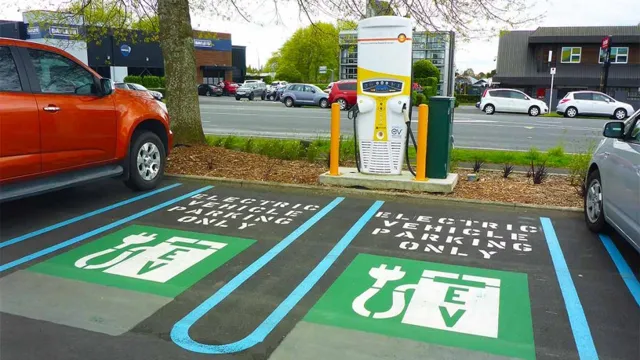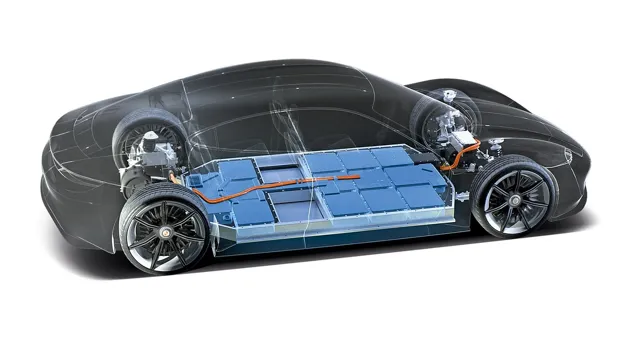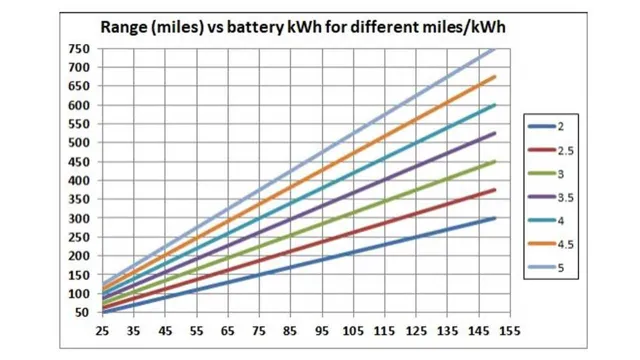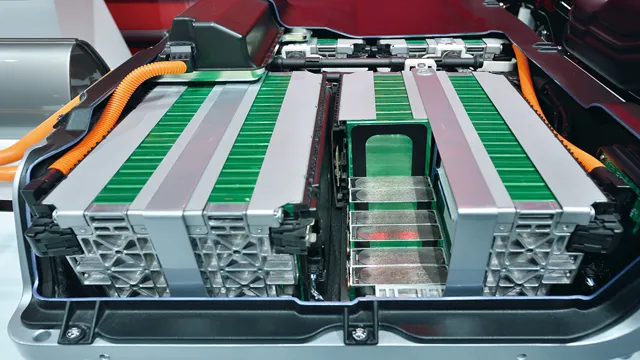Revive Your Electric Ride: Tips to Jump-start Your Dead Car Battery
Have you ever experienced the frustration of a dead electric car battery? You take your car for a spin and suddenly it runs out of juice. You find yourself stranded on the side of the road, with no way to recharge your battery. This is a common problem that many electric car owners face, and it can be quite discouraging, especially if you’re in a rush to get somewhere.
But here’s some good news: there are ways to revive your dead electric car battery, so you don’t have to shell out thousands of dollars for a new one. In this blog post, we’ll be sharing tips and tricks on how to revive your electric car battery. Similar to how CPR can bring someone back to life, there are ways to bring your electric car battery back to life.
With the right knowledge, tools and a bit of patience, you can make your battery function just like new. We’ll be discussing various methods, such as pulse charging, fast charging, and trickle charging, that you can use to revive your dead battery. We’ll also delve into the most common causes of battery death and how to prevent them from occurring in the future.
So, sit back, relax, and grab a cup of coffee as we guide you through the process of bringing your dead electric car battery back to life. With the right approach, you can save money and avoid the inconvenience of being stranded on the side of the road with no battery power.
Understanding Electric Car Batteries
Have you ever experienced the frustration of your electric car battery dying unexpectedly? Understanding how electric car batteries work can help prevent this inconvenience. Unlike traditional gasoline engines, electric cars rely on rechargeable lithium-ion batteries that store energy to power the electric motor. The performance and lifespan of these batteries can vary depending on several factors, such as temperature, driving style, and charging habits.
For instance, extreme temperatures, both hot and cold, can reduce the battery’s performance and lifespan. Similarly, fast charging and frequently charging the battery to full capacity can also damage the battery cells, ultimately leading to decreased battery capacity and premature failure. By adopting good charging habits, such as slow and steady charging and avoiding extreme temperatures, electric car owners can keep their batteries healthy and prevent unexpected dead battery incidents.
Types of Electric Car Batteries
Electric car batteries are an essential component of any electric vehicle as they store the energy that powers the car. Generally, there are two types of electric car batteries: Lithium-ion and Lead-Acid batteries. Lithium-ion batteries are commonly used in modern electric cars because they hold more energy and deliver better performance.
They are also lighter and smaller than lead-acid batteries, making them a more practical option for modern EVs. On the other hand, lead-Acid batteries are a more cost-effective option but aren’t as efficient or long-lasting as Lithium-Ion batteries. When choosing which battery to opt for, it’s important to consider the car’s charging requirements, driving range, and weight.
This information can help the driver make an informed decision about the type of electric car they should buy. Ultimately, the battery type and range will impact the cost and overall performance of the vehicle in the long run.

How Electric Car Batteries Work
Electric car batteries are vital components of modern electric vehicles. These batteries store electrical energy charged from an external source, usually a charging station or a wall outlet. Most electric car batteries use lithium-ion technology, which is known for its high energy density and long lifespan.
The battery pack consists of numerous cells that are connected to one another to provide the required voltage to operate the electric motor. The battery management system controls the battery’s charging and discharging process, ensuring that each cell operates within a safe and efficient range. The battery’s performance and range depend on several factors, including temperature, driving style, and the size of the battery pack.
As technology continues to advance, electric car batteries will become more powerful and affordable, making electric cars more accessible to the masses.
Reasons for Battery Failure
If you own an electric car, you may have experienced the frustration of a dead battery. While some cases of battery failure are simple and can be easily avoided, others are more complex. One common cause of electric car battery failure is extreme weather conditions.
Both hot and cold temperatures can affect the battery’s performance, and in some cases, even cause permanent damage. Another cause is overcharging or undercharging the battery, as this can lead to reduced capacity or a shorter overall lifespan. It’s also important to keep in mind that how you drive your electric car can impact the battery life as well.
Frequent and sudden acceleration, driving on rough terrain or uphill, or high-speed driving can all put a strain on the battery, leading to a shorter lifespan. By being mindful of these factors, electric car owners can take steps to prolong the life of their car’s battery and prevent unexpected failures.
Over-Discharging the Battery
Over-Discharging the Battery is one of the major reasons for battery failure. It occurs when the battery is depleted too much, to the point where it can no longer hold a charge. This can happen for a variety of reasons, from leaving a device plugged in for too long to running it until the battery dies completely.
While it may seem harmless, over-discharging can lead to serious damage to the battery and decrease its lifespan significantly. One way to prevent over-discharging is to use a battery management system that can monitor the battery’s charge and prevent it from being drained too much. It’s also important to avoid using a device while it’s charging, as this can cause the battery to overheat and shorten its lifespan.
Ultimately, taking proper care of your battery can go a long way in preventing over-discharging and other forms of damage, ensuring that it lasts as long as possible.
Age of the Battery
When it comes to battery failure, the age of the battery is often the culprit. Over time, the chemicals within the battery will break down and lose their charge-holding abilities. This is most commonly seen in lead-acid batteries, which are commonly used in cars.
The older the battery, the less energy it can hold, which can result in slow cranking or even a complete failure to start. In addition to age, extreme temperature fluctuations can also contribute to battery failure. When exposed to high temperatures, batteries can begin to lose water and sulfuric acid, which are necessary for proper function.
On the other hand, cold temperatures can slow down the chemical reactions within the battery, which also leads to reduced performance. Regular maintenance and replacing your battery before it reaches its expiration date can help prolong its life and prevent unexpected failures.
Corrosion and Other Damage
Battery failure is a common issue faced by many individuals, and it can be caused by a variety of reasons. One of the primary reasons for battery failure is corrosion. Corrosion can occur when the acid in the battery leaks out and begins to eat away at the metal components inside the battery.
This can be exacerbated by a lack of maintenance or exposure to extreme temperatures. Additionally, overcharging and undercharging of the battery can cause damage to the internal components, leading to failure. It’s crucial to monitor the battery’s charge levels and ensure that it is charged properly to avoid these issues.
Other factors that can contribute to battery failure include physical damage, such as cracks or leaks, which can happen when the battery is dropped or mishandled. It’s important to remember that the lifespan of a battery is not indefinite, and over time, all batteries will eventually fail. However, proper maintenance and care can help to prolong its life and prevent failure.
Emergency Measures
Finding your electric car battery dead can be a frustrating experience, but there are emergency measures that can be taken to get you back up and running in no time. One of the best ways to prevent a dead battery is to plan ahead and keep a portable charger in your vehicle. These chargers are small and can be easily stored in the trunk, allowing you to recharge your battery anywhere.
In addition, you can also jump-start your car using another vehicle with a functioning battery or call a roadside assistance service for help. It’s important to note that leaving your electric car unused for long periods of time can also drain the battery, so it’s a good idea to start your car and let it run for a few minutes every few days. Taking these simple measures can help prevent a dead battery and ensure that you never get stuck in a difficult situation on the road.
Jumpstarting Your Electric Car
As an electric car owner, it’s important to have emergency measures in place for possible breakdowns or power failures. One essential tool for these situations is a jump starter, which can provide a temporary boost to your vehicle’s battery. But before jumping your electric car, there are a few things to keep in mind.
First, make sure the jumper cables are rated for electric vehicles and have the necessary connectors to fit your car’s ports. Additionally, it’s essential to follow the manufacturer’s instructions carefully to avoid damaging the battery or electrical system. Lastly, it’s important to remember that a jump starter is only a temporary solution and should not be relied on for prolonged use.
By keeping these tips in mind and having a jump starter at the ready, you can feel confident in handling any unexpected setbacks while on the road.
Towing Your Electric Car for Repairs
If you ever find yourself in an emergency situation with your electric car needing repairs, towing it may be necessary. However, it is important to keep in mind that towing an electric car requires a different approach than towing a traditional gas-powered car. The battery pack in an electric car is dense and heavy, so you need to make sure you are using a tow truck that is capable of towing electric cars.
Additionally, you should never attempt to tow an electric car using a dolly or towing it from the rear, as this could damage the battery pack. Instead, it is recommended to use a flatbed tow truck to safely transport your electric car for repairs. It may be helpful to keep contact information for a towing company that provides electric car towing services in case of an emergency.
With proper planning and precautions, you can ensure that your electric car is safely transported for the necessary repairs.
Preventing Future Battery Failures
Electric car battery dead If you’re a proud owner of an electric car, you must have heard by now the horror stories of electric car battery failures. Nothing is worse than being stuck in the middle of a road with a dead battery. However, preventing future battery failures is possible by following a few simple steps.
Firstly, it’s important to monitor the battery’s health regularly. This can be done by checking the battery’s voltage and temperature, which can be easily done using a diagnostic tool. Secondly, avoid overcharging or undercharging the battery, as it can lead to an imbalance in the cell chemistry.
Lastly, keep your battery away from extreme temperatures, as it can cause irreversible damage to your battery. Following these simple steps can help you prolong your battery’s life expectancy, saving you from the hassle of sudden dead batteries on the road.
Conclusion
When it comes to electric cars, a dead battery can bring you to a complete stop faster than a red light. While the insights into rechargeable energy storage continue to grow and evolve, sometimes we just have to accept that with great efficiency comes great responsibility. So, remember to charge your battery and stay charged-up!”
FAQs
What causes an electric car battery to die?
Several factors can contribute to an electric car battery dying, including leaving the car sitting for too long without charging, excessive use of certain features such as air conditioning or heating, and extreme weather conditions.
How long does an electric car battery typically last before needing a charge?
The lifespan of an electric car battery varies depending on the specific make and model of the car, as well as on how it is used and maintained. In general, most electric car batteries can last anywhere from 100 to 300 miles on a single charge.
Can an electric car battery be recharged after it has died completely?
Yes, it is possible to recharge an electric car battery after it has died completely. However, it may take several hours or even overnight for the battery to fully recharge, depending on its size and the charging method used.
What type of charging stations are available for electric car owners?
There are several types of charging stations available for electric car owners, including Level 1, Level 2, and DC fast charging. Level 1 charging simply uses a standard household outlet, while Level 2 and DC fast charging require specific charging stations and can charge the battery much more quickly.







